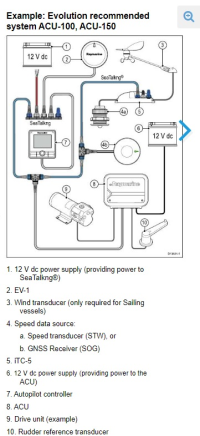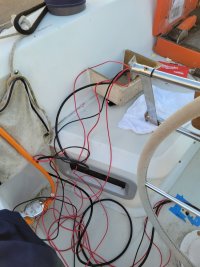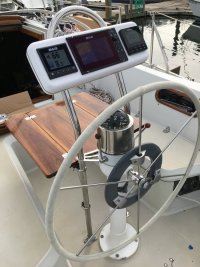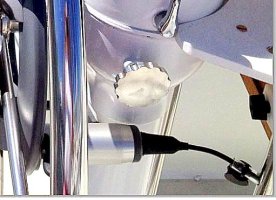Alan Gomes
Sustaining Partner
This is certainly true by the nature of the case, since a human helmsman can anticipate what is coming vs. reacting to what is taking place. But it's also true that not all autopilots are created equal in the way they handle this.One thing a wheel pilot can't handle is waves on a reach, which are what makes all the work for a human helmsman. If the boat is caused to roll by a quartering sea, the hull form makes it turn powerfully as it rolls, and the little gizmo cannot compensate. Otherwise, though, wheel pilots works well if we remember to accommodate their needs.
My Pelagic autopilot, which granted is a tiller pilot vs. a wheel pilot, does a remarkably good job in surfing down waves on a reach--close to as good as a human helmsman and plenty good enough most of the time. As an apples-to-apples comparison, there is a world of difference between the Pelagic and the Raymarine ST-2000 tiller pilot. Not only is the actuator far more powerful than the anemic motor with plastic gears in the Raymarine, but the 9-axis gyro in the Pelagic adapts to the sea conditions and boat motion quite smartly. It's actually pretty impressive. I really get a kick out of watching it do its thing on my beam to broad reaches back from the Isthmus to San Pedro.
All the comments about sail trim are, of course, spot on. Autopilots, even at their best, cannot overturn the laws of physics. If a human helmsman is finding the boat out of balance and difficult to control, an autopilot will certainly not find it any less so.




